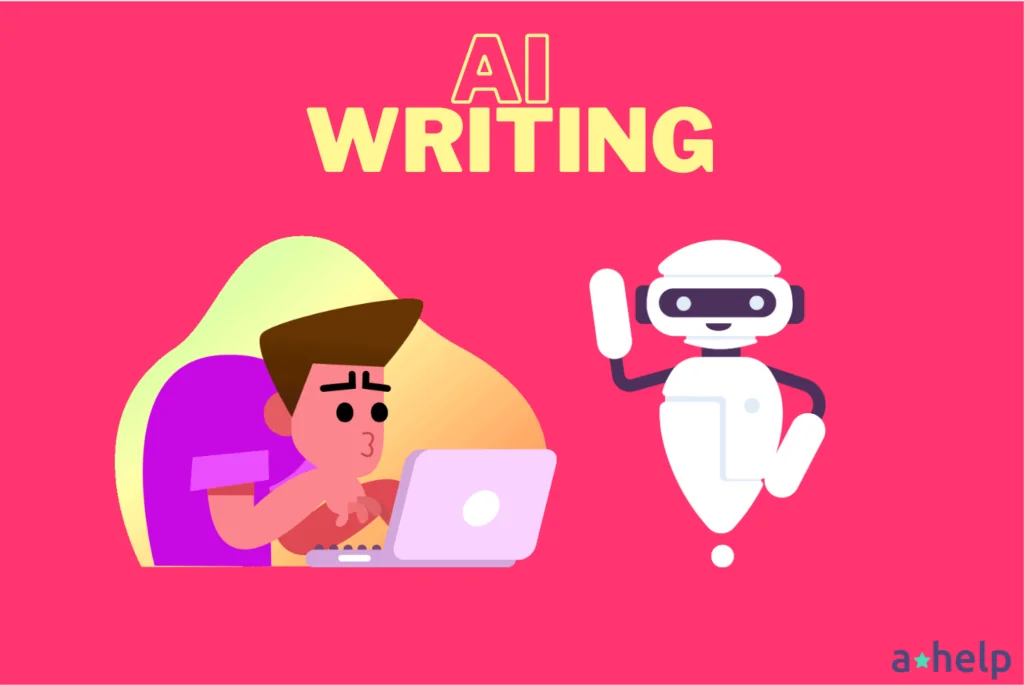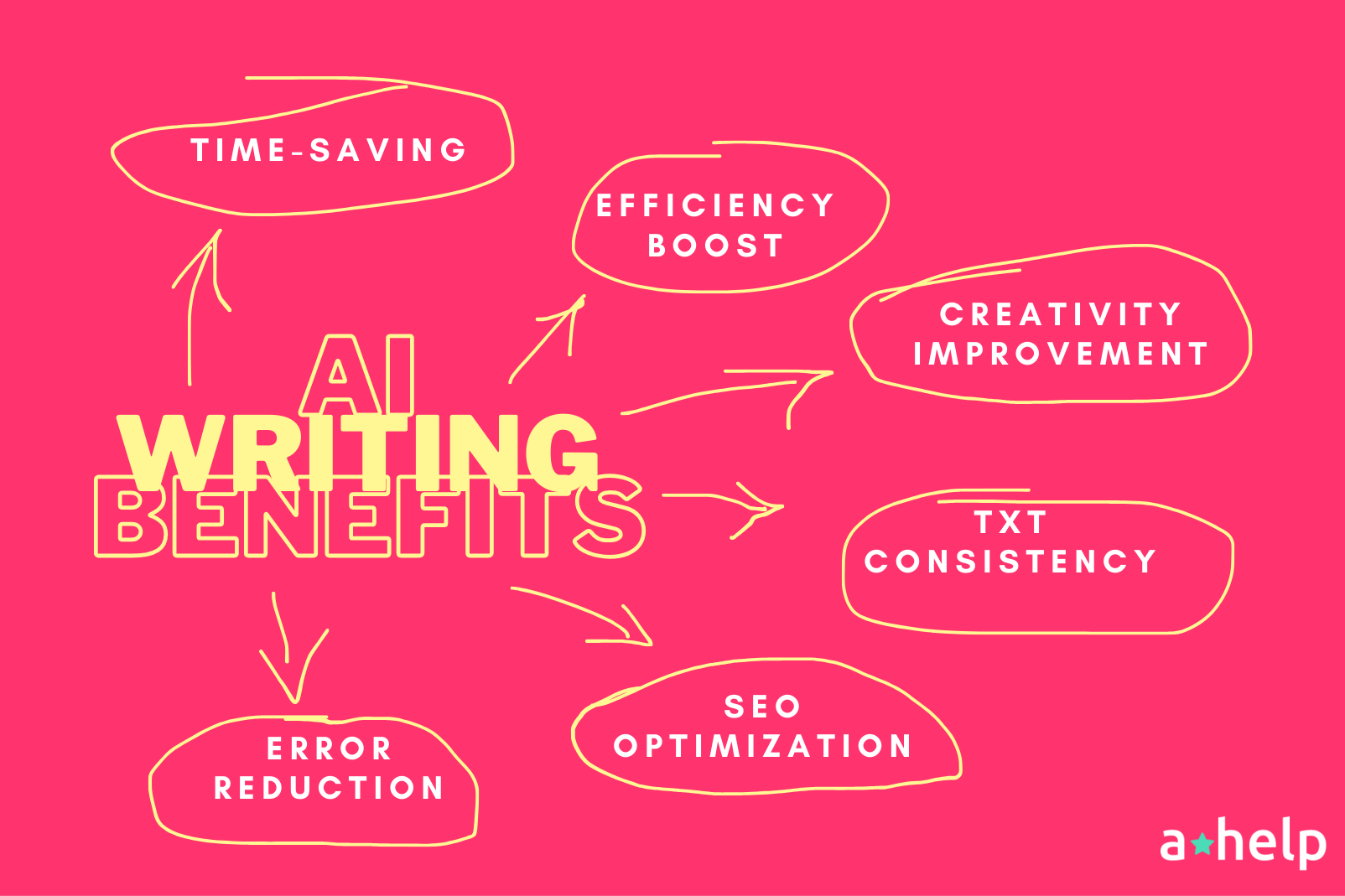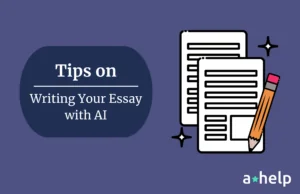AI bots have been out and about for quite some time now, however, they gained the most popularity over the past 1,5 years. Well, maybe you weren’t so much into learning about them previously but are interested in getting to know them now. Or maybe you just want to clarify some of the existing knowledge about AI writing. In any case, in this article, we will find out what AI writing is and how you can benefit from using it.

✅ AI Essay Writer ✅ AI Detector ✅ Plagchecker ✅ Paraphraser
✅ Summarizer ✅ Citation Generator
AI Writing Is…
AI writing is what you think it is – written content (mostly textual) produced and composed by artificial intelligence. Usually, you need to submit some kind of instruction (prompt) telling AI what you want it to do. Of course, you can now create all the different types of content, from essays to articles to social media posts, images, and even videos.

However, this evolution only happened just recently. Before that, the most popular type of artificial content was textual. Yet, the integration of AI in writing is not without its challenges. One of the primary concerns is maintaining the authenticity and emotional depth that characterize human writing. While AI can generate technically accurate content, it may lack the nuanced storytelling and empathy that resonate with readers on a personal level. Additionally, ethical considerations in the form of data privacy and the potential for algorithmic bias need to be addressed so that AI writing tools are used responsibly.
Despite these challenges, the potential of AI writing is currently undeniable. It offers a way to keep up with the ever-increasing demand for fresh content in the digital age.
How does AI writing work?
Now, that we know what AI writing is, we can dig a bit deeper into how it works. Mainly it operates through a process known as natural language processing (NLP), which is a subset of artificial intelligence. This technology allows machines to understand, interpret, and generate human language. At the heart of AI writing is machine learning, where algorithms are trained on vast datasets of text to learn patterns, structures, and nuances of language. When a user types a prompt, the AI uses this learned information to create text that matches the requested context and style.
The process of such writing is realized in a couple of stages. Everything starts with content analysis, where the AI determines the subject and tone of the desired output. Next, based on such analysis, the AI understands the context and finds relevant patterns. The tool then structures the document, creating a reasonable narrative flow.
Then the sentence creation follows, with the AI generating phrases to convey the intended message. Finally, grammar structuring makes the output grammatically correct and naturally readable. Thanks to this process, the AI continuously refines its output based on feedback and additional data, improving its accuracy and reliability over time.
Why Do People Use AI To Write
It’s clear that with such elaborate algorithms, AI can be used to improve our lives. Most of the times today, it help us make our daily routine easier (and boost productivity or creativity). For example, bloggers can quickly fill their content schedules and popularize products, while small businesses can effortlessly craft marketing emails and social media posts without dedicating extensive resources to content creation.
For writers, AI proves to be beneficial for overcoming writer’s block, since it gives suggestions and ideas, helping writers to start and continue their work seamlessly. AI writing tools may also be invaluable for creating personalized and persuasive communication, such as emails, that resonate with the target audience. Clearly, using AI in writing is a strategic choice for anyone looking to streamline their content creation process and stay competitive in the fast-paced digital (and not just digital) landscape.
The Benefits of Using AI Writing Tools and Bots
We know why people use it – because we are lazy (we say this jokingly, but it is kinda true). Yet it is hard to deny that AI writing offers a variety of benefits to anyone who uses it correctly:
- AI writing tools significantly reduce the time required to produce content, enabling faster turnaround times.
- They streamline the writing process, automating repetitive tasks and generating content quickly.
- Artificial intelligence a lot of time can provide suggestions and ideas, helping writers overcome blocks and spark new ideas. And it doesn’t get tired (unless the usage cap can reach its limits)

- AI tools help maintain a consistent tone and style across various pieces of content.
- They can analyze trends and keywords to produce content that is more likely to rank well in search engines.
- AI can catch and correct grammatical and spelling errors, improving the overall quality of the content (how did you think Grammarly worked?).
AI Writing in Non-English Languages
We mostly hear about the AI development in tools that use and operate in English. The truth be told though, these tools can also be adapted and used in other languages as well. Yet, as for now, developing multilingual AI writing tools presents some challenges. For starters, each language has its unique set of rules, syntax, and cultural nuances, of course. Languages like Japanese and Arabic have distinct writing systems and sentence structures, requiring specialized algorithms to accurately generate text. Hence, we can’t use the same system or NLP generation program for them the same we used for English.
This shows another problem – the limited amount of training data we have, especially for less widely spoken languages. Consequently, this makes it harder for AI models to learn and produce high-quality content. Because of this data scarcity, we receive less accurate and natural-sounding text in such languages.
Impact of AI Writing on Content Consumption
We see how AI chatbots have now influenced our work, especially when it comes to text creation. This content revolutionizes how we consume all kinds of information. With AI, content can be tailored to individual preferences and behaviors, providing a more engaging and relevant experience for readers. News aggregators can use AI to curate personalized news feeds, ensuring that users see articles that match their interests and reading habits.
For content creators and marketers, this shift towards AI-driven content consumption presents both opportunities and challenges. On one hand, it allows for more targeted and effective content strategies, as AI can help identify trends and preferences among audiences. On the other hand, it raises the bar for content quality and relevance, as consumers become accustomed to highly personalized information (or for massively produced generic content).
As AI continues to shape our content consumption, creators, marketers, and professionals from other fields will need to adapt their approaches and use AI tools to create articles, images, videos, and other types of products that resonate with audiences while still maintaining authenticity and value.
FAQ
Follow us on Reddit for more insights and updates.





Comments (0)
Welcome to A*Help comments!
We’re all about debate and discussion at A*Help.
We value the diverse opinions of users, so you may find points of view that you don’t agree with. And that’s cool. However, there are certain things we’re not OK with: attempts to manipulate our data in any way, for example, or the posting of discriminative, offensive, hateful, or disparaging material.